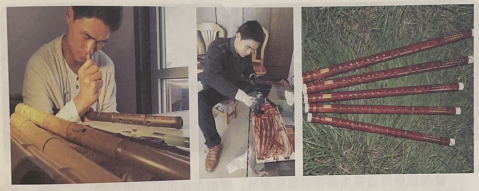申报地区:老城区 2020年08月 第5批

箫的产生,其历史可以追根溯源到远古时期。中国考古学表明,目前出土文物中发现了有距今八、九千多年的骨质发声器,考古学家称之为“骨哨”。用竹子制作箫,见《吕氏春秋》:“黄帝命伶伦伐昆仑之竹为管”。箫笛在现代音乐中,被广泛应用。通常由于箫笛音域广泛,音色表现力丰富,在音乐当中,在乐团当中常常用来担任主奏乐器使用。按“音孔”数量区分为六孔箫和八孔箫。六孔箫的按音孔为前五后一,八孔箫则为前七后一,八孔箫为现代改进的产物。
洛阳箫笛,选用四年以上竹材,阴干两年,经过三十多道制作工序精制而成,其音色有通透饱满,低音浑厚,中音圆润,高音明亮的特点。不但能制作传统箫笛,并与现代制作方法相结合,加入了南箫、尺八的制作方法,大大提高了箫笛在演奏时的操控性,音色变化丰富,通透度高,深受国内箫笛演奏家们的热爱。
In terms of the origin, Xiao, a vertical bamboo flute, can be traced back to the bone sounders or "bone whistle"unearthed in cultural relics more than eight or nine thousand years ago. It is widely used as the main musical instrument in modern music, and classified into six-hole Xiao and eight-hole Xiao. The Xiao made by Han Zhenguo in Luoyang are made of more than four year-old bamboo after being dried for two years in the shade. The music produced from Xiao is characterized by transparent and full timbre, thick bass, being mellow and full. It is also integrated with elements of modern production technique, which greatly improves the controllability of Xiao in performance and transparency.
